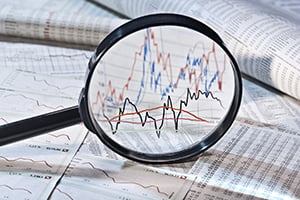 I have been preparing a couple of big-picture pieces over the past couple of days, including the monthly economic risk factor and market risk updates, and it has been a bit eye opening. Conditions have deteriorated more than I had realized. Although I still don’t think we are in the trouble zone, we are certainly getting closer, as was shown in this month's Economic Risk Factor Update. I wanted to get a bit more into the detail around those risks today.
I have been preparing a couple of big-picture pieces over the past couple of days, including the monthly economic risk factor and market risk updates, and it has been a bit eye opening. Conditions have deteriorated more than I had realized. Although I still don’t think we are in the trouble zone, we are certainly getting closer, as was shown in this month's Economic Risk Factor Update. I wanted to get a bit more into the detail around those risks today.
What’s the big picture?
Over the past year, economic growth has slowed substantially on a year-on-year basis. We were pushing 3 percent in mid-2018 and are now down to just over 2 percent. That’s a big drop. When you look at the details, you can see why. Job growth is down materially over the same time periods, consumer and business confidence ditto, and the yield curve inversion grinds on. Looking at all these factors, you could reasonably predict a recession in the next 12 months. Indeed, that is a real possibility.
Trouble ahead?
It is never that simple, though. Looking at the data, many of these factors looked the same in 2011 and 2015–2016, and we avoided a recession back then. Three indicators—job growth, consumer confidence, and business confidence—look very much like they did then, before recovering. These signals are reliable, but they are not infallible. As we know, conditions can change.
But it’s true that some things are worse this time. We did not have a yield curve inversion in 2011 or 2015–2016, for example, and the gap between consumer confidence and expectations wasn’t nearly as wide. Both of those factors increase the likelihood of trouble ahead.
Still, some conditions are positive. Interest rates, for example, dropped on rising risks in 2011 and 2015–2016, and the same has happened this time. Lower rates typically stimulate the economy. That seems to be happening again as housing has moved back into positive territory in recent months on lower mortgage rates and higher affordability.
Similarly, the declines earlier in this cycle were based on rising fears—of a Grexit, of the election, of many things that did not happen. Right now, we have a trade war, Brexit, the impeachment, Hong Kong, and on and on. What if some of these issues were resolved without disaster, as happened earlier?
Make no mistake, the signs are that a recession is coming in the next couple of years, but we have seen these signs before without result. Rising risks do not necessarily mean inevitable trouble.
Unless something happens . . .
As an economist and investor, I long ago learned to caveat anything I wrote or said with the proviso “unless something happens.” Right now, the data shows a recession is likely, unless something happens. The thing is, something usually does happen. If it’s positive, like a trade deal, it might well buy us some more time. If it’s negative, well, isn’t that what we are already expecting?
We need to stay watchful, as there are good reasons to worry. But we also need to recognize that we don’t yet have the conditions for a recession in place—and it may end up taking longer to get here than we think.


 Print
Print

